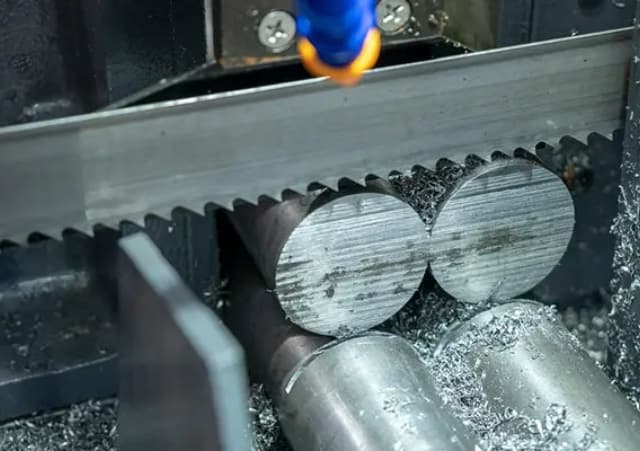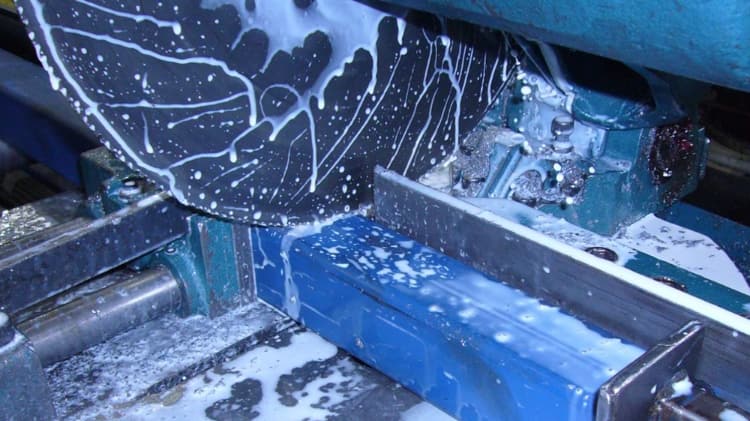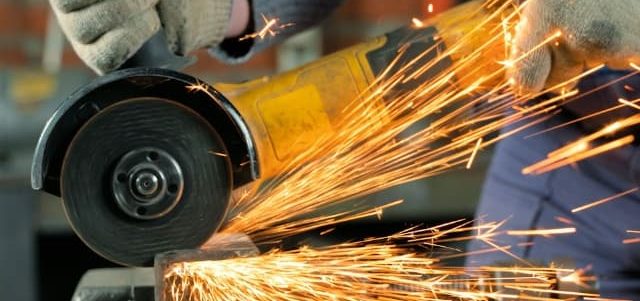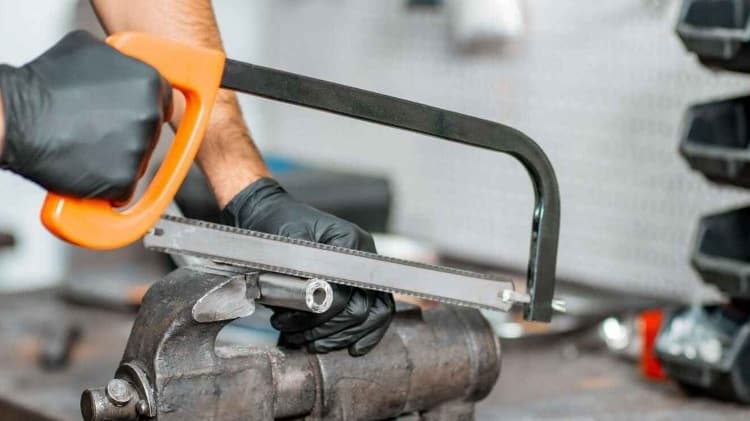In the world of metal fabrication, selecting the right sawing method can make the difference between precision cuts and wasted materials.This blog will introduce you to various sawing methods to help you better choose the right sawing method for your project.
What is Sawing?
Before introducing the types of sawing, let us first understand what sawing is?Sawing is a metalworking process that involves cutting and separating metal materials using a toothed tool (saw blade or saw band). This processing method is widely used in the steel manufacturing and metal fabrication industries, particularly suitable for cutting various types of metal bars, tubes, plates, and structural shapes.
The main characteristics of sawing include:
High precision: Modern sawing equipment can achieve precise dimensional control, ensuring flat cutting surfaces with small tolerances.
Wide material applicability: It can process various metal materials including stainless steel, carbon steel, titanium alloys, nickel alloys, and more.
High efficiency: Compared to other cutting methods, sawing typically offers faster processing speeds, making it especially suitable for mass production.
Minimal material waste: The narrow kerf of sawing maximizes material utilization and reduces material loss.
Good surface quality: High-quality sawing produces relatively smooth cutting surfaces, reducing the need for subsequent processing.
Band Sawing
Band sawing represents one of the most versatile metal cutting methods available today. This technique utilizes a continuous band of toothed metal stretched between two or more wheels to cut material. Band saws excel at making both straight and curved cuts, making them invaluable in many metalworking applications.
The advantages of band sawing include minimal material waste due to the narrow kerf (cut width), excellent cutting efficiency, and the ability to cut large workpieces. When working with stainless steel or carbon steel, band sawing provides clean cuts with minimal burring, reducing the need for secondary finishing operations. For titanium and other specialized alloys, variable speed band saws allow operators to adjust cutting speeds to prevent work hardening and ensure optimal results.

Cold Sawing
Cold sawing earns its name from the cutting process that generates minimal heat, preserving the material’s metallurgical properties. This method uses a circular toothed blade that transfers heat away from the workpiece into the chips created during cutting. Cold saws operate at low speeds but with high torque, resulting in precise, burr-free cuts.
This technique is particularly valuable when working with heat-sensitive materials like certain stainless steel alloys and titanium. The lack of heat-affected zones means the material retains its original strength and corrosion resistance properties. Cold sawing also produces excellent surface finishes, often eliminating the need for additional machining processes.

Circular Sawing
Circular sawing employs a toothed or abrasive disc rotating at high speeds to cut through metal workpieces. This method is known for its speed and efficiency, making it ideal for high-volume production environments. Modern circular saws can handle everything from thin-walled tubing to solid bar stock with remarkable precision.
When processing carbon steel and other common alloys, circular sawing offers fast cutting speeds and consistent results. The method’s efficiency makes it particularly suitable for construction and manufacturing applications where throughput is critical. However, proper blade selection and cooling techniques are essential to prevent material distortion when working with heat-sensitive alloys.

Abrasive Sawing
Abrasive sawing utilizes a thin composite disc embedded with abrasive particles to cut through metal. Unlike toothed blades, these cutting wheels work by grinding away material rather than shearing it. This method excels at cutting extremely hard materials that would quickly dull traditional saw blades.
Abrasive sawing is particularly effective for hardened steels and exotic alloys that present challenges to conventional cutting methods. The process generates significant heat, making proper cooling essential. While it may produce a rougher surface finish compared to other methods, abrasive sawing’s ability to cut through virtually any metal makes it indispensable in many industrial applications.

Hacksawing
Hacksawing, though one of the oldest metal cutting methods, remains relevant in many applications. This manual or powered process uses a reciprocating blade with teeth that cut during only one direction of movement. While slower than modern alternatives, hacksawing offers simplicity and portability that can’t be matched by more complex systems.
For small-scale operations or field work, hacksawing provides a practical solution for cutting stainless steel, carbon steel, and other common metals. The method’s simplicity makes it accessible to operators of all skill levels, and modern powered hacksaws have significantly improved cutting speeds while maintaining the technique’s fundamental advantages.

Conclusion
Selecting the right metal sawing technique isn’t just about completing a cut—it’s about achieving precision, efficiency, and cost-effectiveness in every project. Each method, from band sawing to abrasive sawing, offers distinct advantages depending on the material, thickness, and desired finish. By understanding these differences, you can make informed decisions that enhance both productivity and the quality of your work.
At Daxun Alloy, we specialize in delivering high-quality stainless steel, carbon steel, titanium, and other alloys tailored to your exact specifications. Our team is ready to assist with expert advice and top-tier materials for your next project. Reach out to us today to learn how we can support your metal fabrication needs.




